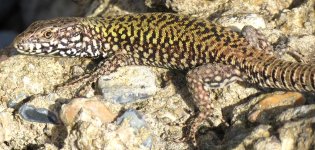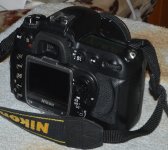Yes there is on some cameras, but you don't need it for what you're doing. You're not going to need single point one second, then quickly switch to dynamic etc. Just use single point and stick with it (unless you're doing a different subject altogether, like a football game).I agree with single spot focusing. I wish there was button (not menu driven). The might be on some cameras.
You are using an out of date browser. It may not display this or other websites correctly.
You should upgrade or use an alternative browser.
You should upgrade or use an alternative browser.
General Photography thread
- Thread starter SeagullSongs
- Start date
More options
Who Replied?brightn'ove
cringe
Yup, that's all good, however I said might be worth a shot if he's got still lizards. Worth a go.
Obviously no chance of it working if the lizards are moving, but everything I've read so far points to keeping the ISO low if you can, as higher ISO makes grainy photo's.
Mainly just good practice with long exposures.
Grain isn't something to worry about really, unless you're printing your photos to enormous sizes. Keeping a low ISO is what you should have by default but if you want to take photos in low light (and you want to keep the same depth of field and don't have a tripod) ISO is the thing you should change. As I said, modern cameras can take very usable pictures at high ISO, and even if there is a bit of grain, you can get rid of the worst of it in lightroom.
Only use the lowest ISO when there's no need to increase it. But that doesn't mean you shouldn't increase it when it helps, modern cameras have amazing high ISO performance, the photos aren't all grainy.everything I've read so far points to keeping the ISO low if you can, as higher ISO makes grainy photo's.
What camera do you have? I have a VERY old canon DSLR and it has a button that allows you to choose the focus point, i'm sure that on most DSLRs there are buttons to choose focus mode and focus point rather than a menu.
Also all bridge cameras are different, they can range from very close to DSLR to point-and-shoot. If you have a DSLR im certain there will be a way for you to set focus points with buttons rather than in the menu.
https://www.youtube.com/watch?v=fqMTaPE7wFg
I think this is one difference between the professional DSLRs and entry level. Pro cameras have more buttons (for good and bad). There are operational ways around the shortcomings. Not got the little buttons shown on the video (Nikon D3200.)
Macro (close-ups) is a different matter altogther. Lizards are not macro. Can't get close enough.
Yes there is on some cameras, but you don't need it for what you're doing. You're not going to need single point one second, then quickly switch to dynamic etc. Just use single point and stick with it (unless you're doing a different subject altogether, like a football game).
If I want a quick change I can switch to auto. More likely the other way around.
That will reduce the amount of light coming in a lot. Is it that you want absolutely everything in focus, or are you just wanting to increase your chances of getting the lizard in focus?PS: I have just thought of a short cut to the focusing problem. Put it on single spot focusing for Aperture priority, and stop down maximum (higher f number) (not to worry about bokeh).
It would still be good to choose your aperture for a landscape shot, the camera can't magically decide what to get in focus. One option is to learn to use the separate focus button on your camera (using AF-ON), so you can use single point focus and pre-focus a third of the way into your landscape (a third between the front of what you want in focus, and the back). That way, when you press the shutter release, it won't refocus. That may be a bit much to think about right now, but it is a good way to use the camera, and fixes a lot of your focussing and mode issues.For landscape shots, I can switch to auto.
But it's a great life eh Oxy. Can't imagine a life without photography
So true, it's a great hobby to combine with other interests. I just wish digital had overtaken film a lot sooner - would have taken it a lot more seriously. Love digital.
Grain isn't something to worry about really, unless you're printing your photos to enormous sizes. Keeping a low ISO is what you should have by default but if you want to take photos in low light (and you want to keep the same depth of field and don't have a tripod) ISO is the thing you should change. As I said, modern cameras can take very usable pictures at high ISO, and even if there is a bit of grain, you can get rid of the worst of it in lightroom.
I'd always go for the lowest ISO possible, especially with compact cameras that have tiny sensors. The photo below was taken at ISO 12,800 - 1/60 - F5.6 - 250mm lens - Canon 70D (crop sensor). There wasn't much choice about settings, but the result was perfectly usable. And the image is slightly cropped, but I've not done any grain reduction. My landscapes are almost always ISO 100.

Not forgetting that using a 16-300 mm lens VR (image stabilised) requires a reasonably high shutter speed to avoid blur: a problem of the English winter climate.
With bridge cameras (smaller sensor, greater depth of field) the focusing problems are not so acute.
Too dull for lizards to come out today.
With bridge cameras (smaller sensor, greater depth of field) the focusing problems are not so acute.
Too dull for lizards to come out today.
What speed do you think you need for each focal length?Not forgetting that using a 16-300 mm lens VR (image stabilised) requires a reasonably high shutter speed to avoid blur
But the ISO performance won't be as good either.With bridge cameras (smaller sensor, greater depth of field) the focusing problems are not so acute.
brightn'ove
cringe
I'd always go for the lowest ISO possible, especially with compact cameras that have tiny sensors. The photo below was taken at ISO 12,800 - 1/60 - F5.6 - 250mm lens - Canon 70D (crop sensor). There wasn't much choice about settings, but the result was perfectly usable. And the image is slightly cropped, but I've not done any grain reduction. My landscapes are almost always ISO 100.
I agree, as I said you should by default have your ISO as low as possible. But if you need a certain shutter speed to avoid blur, and a certain aperture to get the scene in focus then you shouldn't worry about a bit of noise. Likewise I have my camera set to 200 ISO by default and then to 100 when shooting wide open.
Last edited:
What speed do you think you need for each focal length?
But the ISO performance won't be as good either.
Speed: don't know with VR lens? Gonna limit to 1/60 at 300mm. It is a major consideration in this weather.
ISO: not so bad. Bridge cameras are naff for landscapes (Canon SX60) especially in poor light, but not so good in good light either. Macro in the field is quite strong. Only some bridge cameras (Canon SX40 is poor.)
Lizard pictures are not macro, but I'm struggling to find the right settings to compete with the bridge camera. (I can't just decrease the aperture because of other factors. So I am down to getting more precise spot focusing on the subject.)
https://www.youtube.com/watch?v=oZ8ab8dt4OI
Last edited:
Make sure you're technique is good (hold the camera properly, tuck your arms in) and then practice shooting something at home at different shutter speeds. Try 1/120, 1/60, 1/30, 1/15 and compare the sharpness.Speed: don't know with VR lens? Gonna limit to 1/60 at 300mm.
And that's the way it should be. Most decent wildlife pictures you see (check some on this very thread) will have people accurately focusing on their subject, not having a large DOF.Lizard pictures are not macro, but I'm struggling to find the right settings to compete with the bridge camera. (I can't just decrease the aperture because of other factors. So I am down to getting more precise spot focusing on the subject.)
You're worrying about your camera choice when you haven't even spent time learning to focus on your subject properly. Trust me, your camera will do a fine job when you get used to it.
Make sure you're technique is good (hold the camera properly, tuck your arms in) and then practice shooting something at home at different shutter speeds. Try 1/120, 1/60, 1/30, 1/15 and compare the sharpness.
And that's the way it should be. Most decent wildlife pictures you see (check some on this very thread) will have people accurately focusing on their subject, not having a large DOF.
You're worrying about your camera choice when you haven't even spent time learning to focus on your subject properly. Trust me, your camera will do a fine job when you get used to it.
Fair enough. First trial with new lens (Tamron 16-300). Kit lens were not up to the specific job anyway.
I think the default focusing system is always better to change. It is with bridge cameras as well.
Ninkon D3200 is adequate as a field camera. Pentax mentioned does look a better bet though.
Things that entry level DSLR might not have are
Built-in focus motor: for use with some third party lens.
Commander flash: for off the camera flash w/o leads. (Wires get tangled up).
Little button for changing the focusing modes.(not that important?)
Things that are better
Lightweight and easier to handle in the field
Some have an articulated screen which is good for macro in the field. (In natural field conditions a good bridge camera can compete very well for near macro although will be beaten in the studio. Results show.)
PS: fill the frame with the subject and the default focus processing doesn't matter very much. Lizards are a good test cause I/you cannot close enough to them so focusing is crucial. The more flighty butterflies are the same.

Lizards are easier to get when it is sunny. They stay still for longer and the light is better. But then shadows may detract from the picture.
Last edited:
I know what you mean, but even then it can be nice to have the eyes sharper than the rest of the lizard, so when people look at the image they're drawn to the lizard's eyes. That changes it from just a clear picture of a lizard to something more, where the lizard starts to have personality. Which way is he looking, what's he about to do etc.PS: fill the frame with the subject and the default focus processing doesn't matter very much.
I know what you mean, but even then it can be nice to have the eyes sharper than the rest of the lizard, so when people look at the image they're drawn to the lizard's eyes. That changes it from just a clear picture of a lizard to something more, where the lizard starts to have personality. Which way is he looking, what's he about to do etc.
Some of my lizard pictures, showing very slight improvements with better equipment. All taken in the wild in Shoreham.
http://www.glaucus.org.uk/Lizard-comparison.html
The above picture was rejected. Analysis of mistakes (trial and errror) is usually my way. That way I remember what to do. Requires correct analysis which is why I asked for a second opinion. Interesting that there were different opinions. Like football in that way.
When players may mistakes, they are called to be dropped suddenly ?!. A good footballer should learn from his mistakes. It is called experience.
Manager's job might be able to point out shortcomings and rectify them. A bit like photography.
What is the default setting for one on one with the keeper, Gordon Smith?
Focus Modes

In recommended DSLR cameras the focus modes can be changed by a switch instead of searching though a menu. This is quicker and easier for the photographer.
The Nikon D200 is too big and heavy camera to carry around all the time. And its old = ancient (2005) and pictures are not so colourful as modern cameras.
A Gordon Greer of cameras.

In recommended DSLR cameras the focus modes can be changed by a switch instead of searching though a menu. This is quicker and easier for the photographer.
The Nikon D200 is too big and heavy camera to carry around all the time. And its old = ancient (2005) and pictures are not so colourful as modern cameras.
A Gordon Greer of cameras.
Last edited:
Kneon Light
Well-known member
Waterfall from Iceland - 30 second exposure
Are those all your photos? Some good shots in there.Some of my lizard pictures, showing very slight improvements with better equipment. All taken in the wild in Shoreham.
http://www.glaucus.org.uk/Lizard-comparison.html
